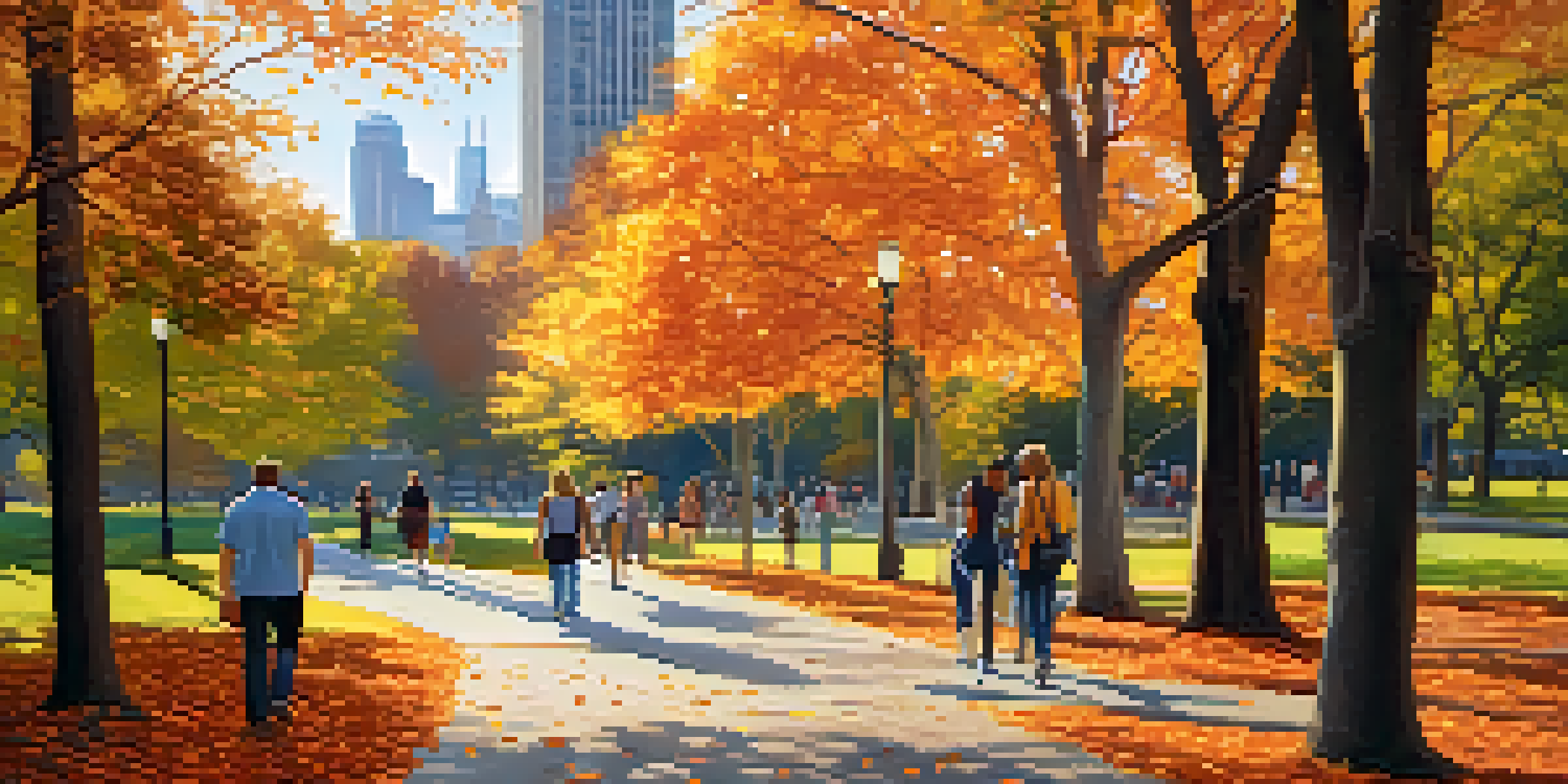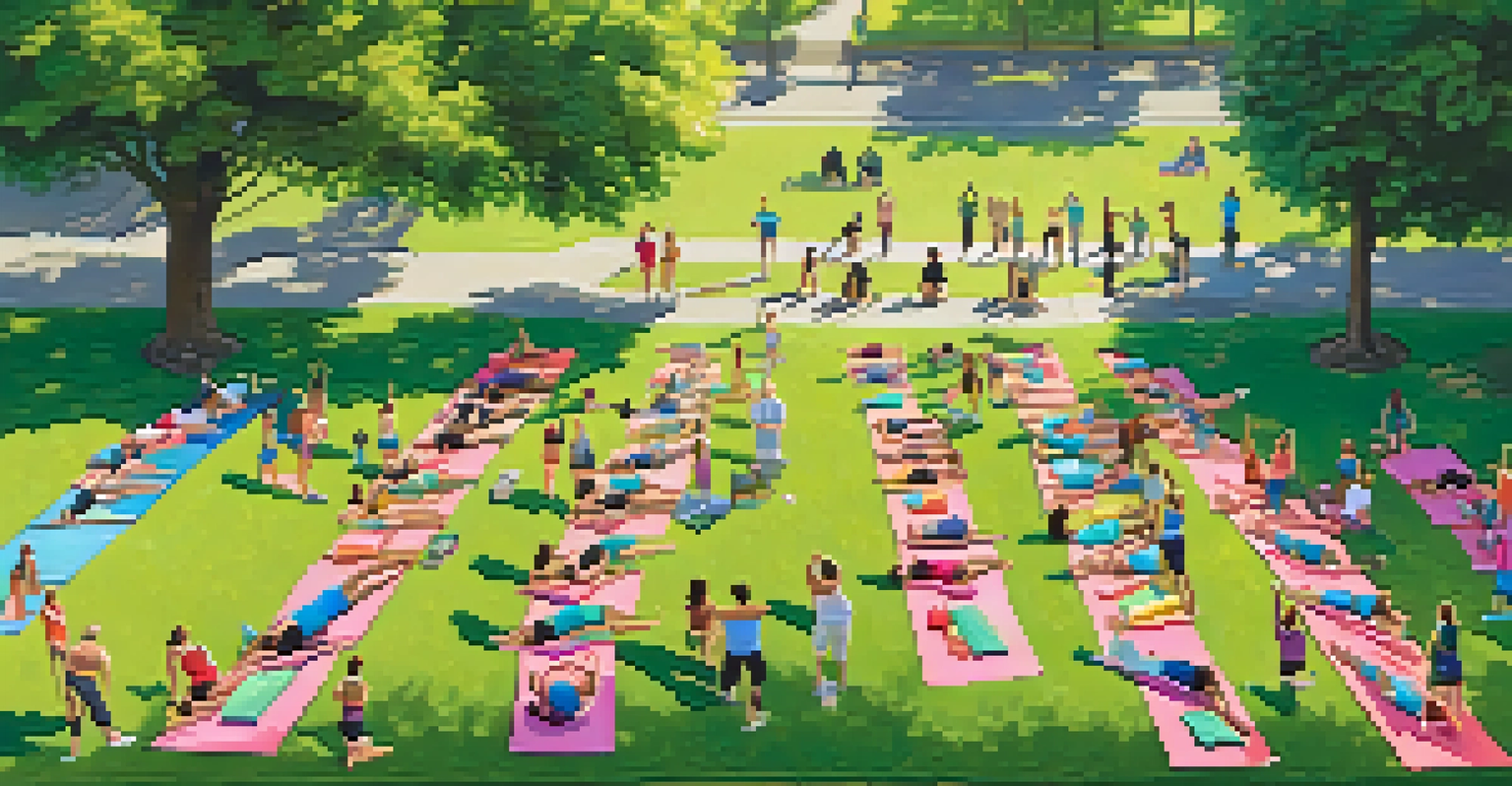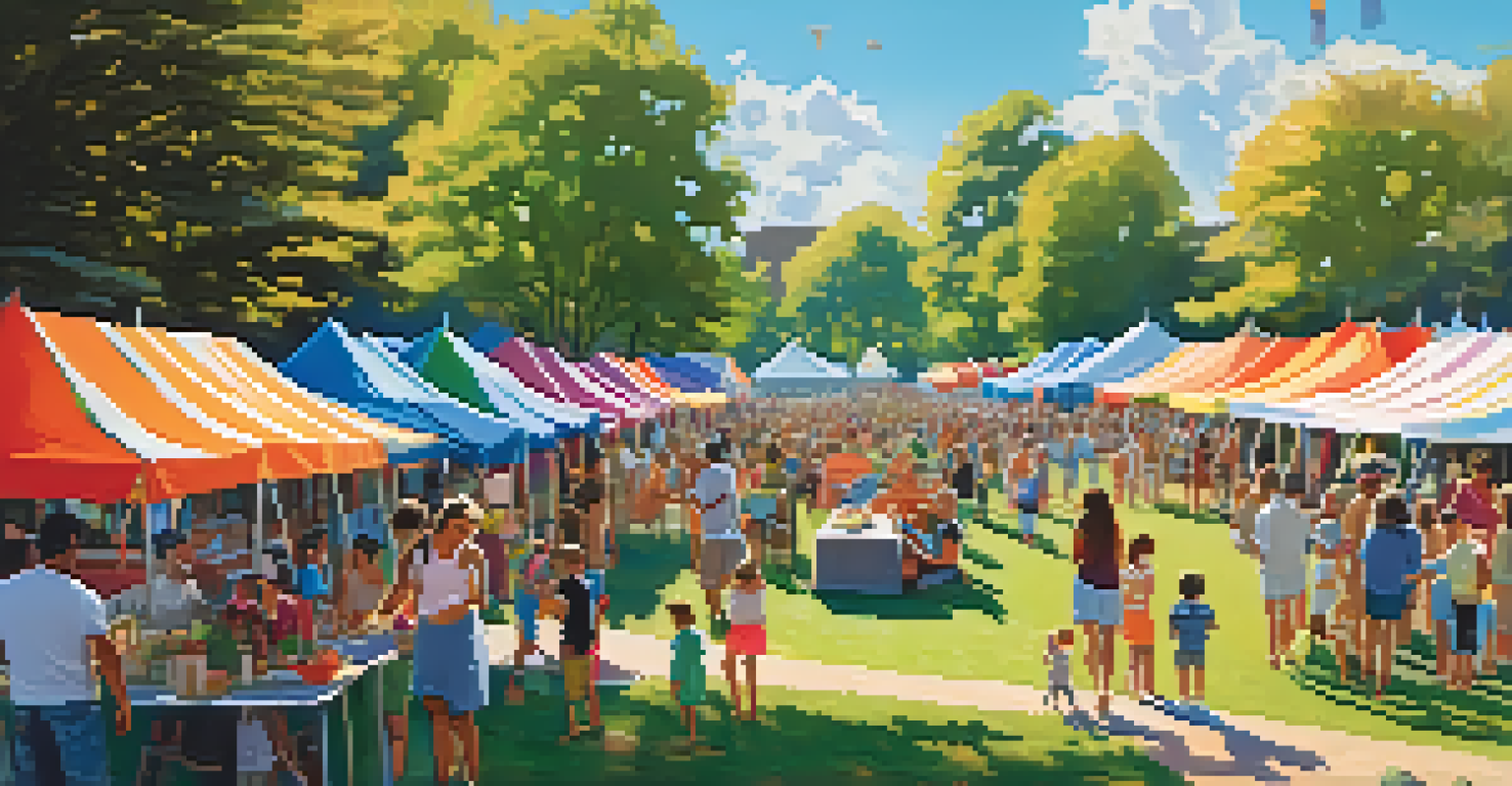The Role of Chicago's Parks in Community and Wellness

The Historical Significance of Chicago's Parks
Chicago's parks have a rich history that reflects the city's growth and commitment to public spaces. Established in the 19th century, these parks were designed to provide green relief amidst urban development, offering a sanctuary for city dwellers. The vision of figures like Frederick Law Olmsted, who helped design Lincoln Park, showcases the early recognition of parks as essential to community health and well-being.
In every walk with nature one receives far more than he seeks.
Over the decades, Chicago's parks have evolved, accommodating the changing needs of its diverse population. From the expansive Grant Park to the tranquil Washington Park, each area serves unique communities and activities, reinforcing the idea that parks are vital for social cohesion. They not only beautify the city but also act as historical landmarks that tell the story of Chicago's resilience and community spirit.
Today, these parks continue to adapt, reflecting contemporary values such as inclusivity and sustainability. The ongoing investment in park facilities and programs demonstrates Chicago's commitment to enhancing urban life, making these spaces more than just patches of grass—they are integral to the city's identity and culture.
Promoting Physical Health Through Recreation
One of the most significant roles of Chicago's parks is promoting physical health among residents. With amenities like walking trails, sports fields, and fitness zones, parks encourage people of all ages to engage in regular physical activity. This accessibility makes it easier for individuals to incorporate exercise into their daily routines, contributing to overall health and well-being.

Moreover, organized sports leagues and fitness classes in parks foster a sense of community while promoting healthy habits. For instance, events like yoga in the park or community runs not only get people moving but also create social connections. These interactions can lead to improved mental health, as participants often find camaraderie and support among fellow exercisers.
Chicago's Parks Boost Community Health
The city's parks promote physical health and mental wellness through accessible recreational activities and community events.
The diverse recreational options available in Chicago's parks cater to various fitness levels and preferences. Whether it's a leisurely stroll, an intense workout, or a friendly game of basketball, there's something for everyone. This inclusivity helps remove barriers to physical activity, making wellness achievable for all community members.
Mental Wellness and Nature's Therapeutic Benefits
Spending time in nature has been shown to have numerous mental health benefits, and Chicago's parks provide the perfect escape from urban stressors. The mere act of walking among trees or sitting by a lake can significantly reduce anxiety and improve mood. Nature acts as a natural balm, helping individuals recharge and find tranquility amid the hustle and bustle of city life.
Parks and public spaces are the lungs of a city, providing fresh air, recreation, and a sense of community.
Research indicates that regular visits to green spaces can enhance cognitive function and creativity. For many, parks serve as a sanctuary for reflection, meditation, or simply unwinding. The peaceful environment encourages mindfulness, allowing individuals to connect with their surroundings and themselves, which is increasingly important in our fast-paced digital world.
Additionally, community events held in parks often focus on mental wellness, offering workshops and support groups. These gatherings not only promote mental health awareness but also create safe spaces for sharing experiences and building resilience. By prioritizing mental wellness, Chicago's parks play a crucial role in fostering a healthier, happier community.
Fostering Community Connections and Social Interaction
Chicago's parks are a melting pot of cultures and backgrounds, serving as gathering places where community members can connect. Whether it's through casual meet-ups, organized events, or simply enjoying a picnic, these spaces encourage social interaction among diverse populations. This blend of people fosters a sense of belonging and strengthens community bonds.
Events like summer festivals, outdoor movie nights, and farmers' markets hosted in parks offer opportunities for residents to engage with one another. These gatherings not only provide entertainment but also highlight local businesses and artists, further enriching the community fabric. Such activities cultivate shared experiences, helping to bridge gaps between different groups.
Parks Foster Social Connections
Chicago's parks serve as vital gathering places that strengthen community bonds and encourage social interaction among diverse populations.
Moreover, the parks often become venues for civic engagement, where residents can voice their concerns and collaborate on projects. This participatory approach empowers individuals, giving them a stake in their community's development. In this way, Chicago's parks are not just recreational spaces; they are vital hubs for social and civic engagement.
Supporting Family Activities and Youth Engagement
Families in Chicago benefit immensely from the diverse offerings of the city's parks. Playgrounds, sports fields, and picnic areas provide a safe environment for children to play and explore, fostering family bonding. These spaces encourage outdoor activities that promote physical health while allowing parents to connect with their children in a fun, engaging way.
Parks also host numerous programs tailored specifically for youth, including summer camps and educational workshops. These initiatives not only keep children active but also teach valuable life skills, from teamwork to leadership. Engaging young people in park activities helps nurture a sense of responsibility and stewardship for their community.
Additionally, family-oriented events like movie nights or holiday celebrations create cherished memories for parents and children alike. These experiences strengthen familial ties and instill a sense of pride in the community. By supporting family activities, Chicago's parks play a fundamental role in shaping the next generation's relationship with nature and their neighborhood.
Environmental Awareness and Sustainability Initiatives
Chicago's parks are at the forefront of environmental awareness and sustainability efforts. Many parks feature educational programs that highlight the importance of conserving natural resources and protecting local ecosystems. By engaging the community in these initiatives, parks serve as living classrooms, teaching individuals about the environment and their role in preserving it.
Sustainability practices like community gardening and recycling programs encourage residents to take an active part in environmental stewardship. These initiatives not only beautify the parks but also foster a sense of ownership and pride among community members. The hands-on experience provided by these programs helps individuals understand the impact of their actions on the environment.
Sustainability in Urban Green Spaces
The parks are champions of environmental awareness, implementing sustainability initiatives that engage the community in preserving local ecosystems.
Moreover, Chicago's parks actively participate in urban forestry and habitat restoration projects, contributing to the city's green infrastructure. These efforts enhance biodiversity and improve air quality, benefiting the entire community. By prioritizing sustainability, the parks play a crucial role in promoting a healthier environment for current and future generations.
The Future of Chicago's Parks: Challenges and Opportunities
As Chicago continues to grow, the future of its parks faces both challenges and opportunities. Urbanization and population growth can strain resources and lead to overcrowding, making it essential for city planners to prioritize park maintenance and accessibility. Balancing development with the preservation of green spaces is crucial for maintaining the parks' role as community sanctuaries.
However, these challenges also present opportunities for innovation and improvement. Community involvement in park planning and decision-making can lead to solutions that reflect the needs and desires of residents. Engaging local organizations and volunteers can bolster support for park initiatives, ensuring that these spaces remain vibrant and relevant.

Looking ahead, Chicago's parks have the potential to evolve into even more integral parts of the community. By embracing technology and sustainability, they can enhance their offerings and improve user experiences. As these parks adapt to changing times, their commitment to community wellness will remain a cornerstone of Chicago's identity.